Inbox and Environment News: Issue 472
November 1 - 7, 2020: Issue 472
Parra'dowee Time
November-December
Goray'murrai—Warm and wet, do not camp near rivers
This season begins with the Great Eel Spirit calling his children to him, and the eels which are ready to mate make their way down the rivers and creeks to the ocean.
It is the time of the blooming of the Kai'arrewan (Acacia binervia) which announces the occurrence of fish in the bays and estuaries.
Acacia binervia, commonly known as the coast myall, is a wattle native to New South Wales and Victoria.
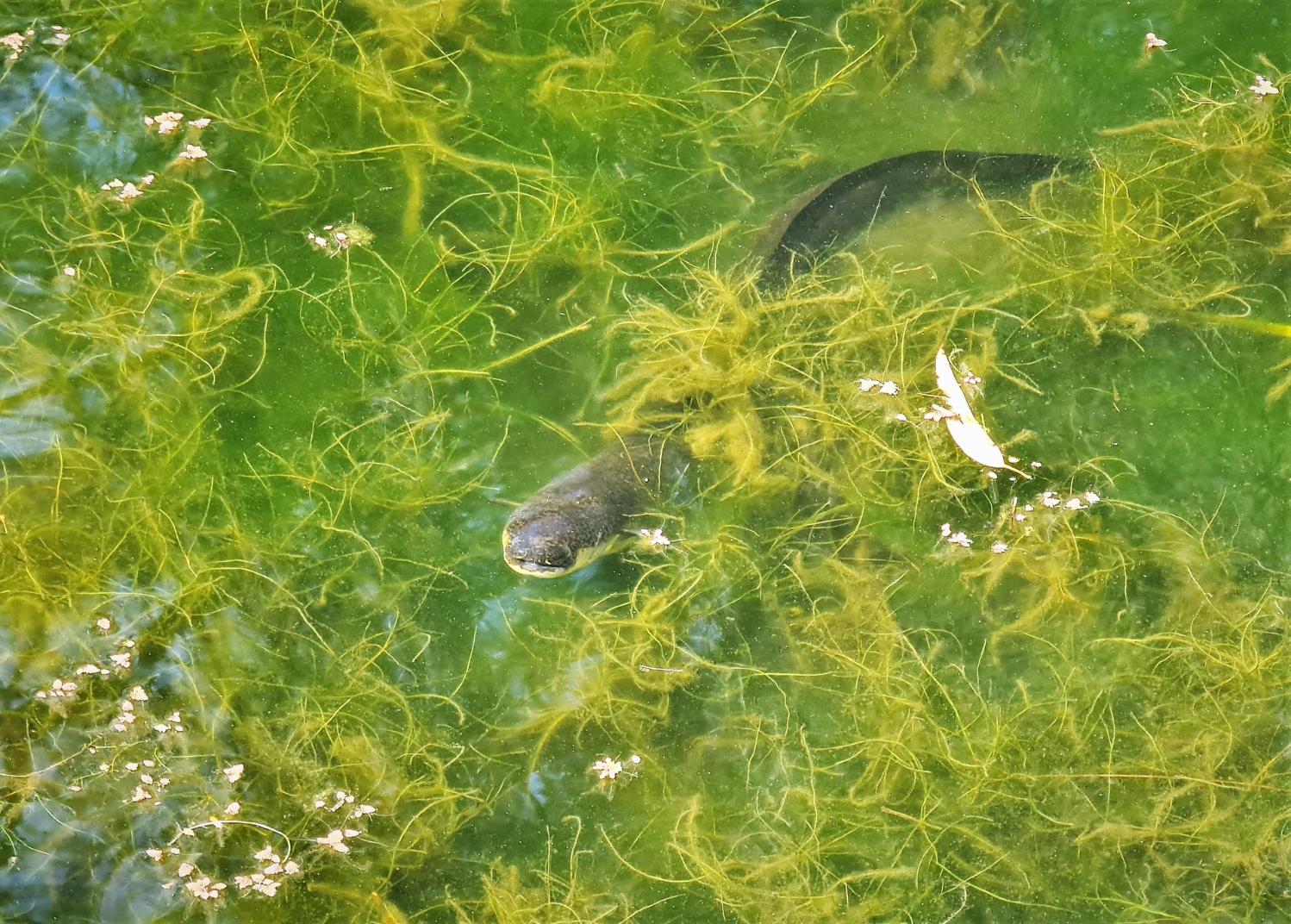
Bark Shedding Time - Pittwater Spotted Gums
.jpg?timestamp=1604150614681)
photo taken this week - by A J Guesdon.
You Could Be Driving On Recycled Garbage From Here
Council is trialling a novel waste recycling solution that transforms materials collected from beaches and streets into sustainable road surfacing material, dramatically reducing waste going to landfill and slashing dumping costs.
In a year to June 2020, Council’s recycling partner Downer has collected and processed 1,137 tonnes of street sweeping and beach waste material, and diverted over 95 per cent from landfill, to be reused for sustainable road construction and other activities.
Materials from Council’s street sweeping and beach raking services are collected and transported to Downer’s Rosehill Detritus Facility, part of Downer’s ‘Reconomy’ business, and sorted to filter sand, aggregates, organic matter and metals.
Sand and gravel obtained from this process are used as part of the asphalt to be used on the road networks from where the material originated.
This process is claimed to be capable of recycling up to 95 per cent of incoming material stream.
Mayor Michael Regan said finding new ways to recycle and reuse garbage means we can reduce the amount of waste that goes to landfill, creates useful products and saves money.
“It’s a triple-win. By taking tonnes of waste materials from our beaches and streets and using it to create roads, we are able to turn trash into valuable infrastructure.”
“As well as environmental sense it also makes economic sense, as Council has saved nearly $83,000 on landfill disposal costs during the 12-month trial.”
“This is another way we are showing local leadership on waste and resource recycling initiatives, while helping to economise on our average $7.4 million a year state government waste levies.”
According to Downer, the waste material collected from the Council area has resulted in approximately five kilometres of road made with transformed asphalt.
Downer’s General Manager, Reconomy, Jim Appleby, said: “It’s all about pulling products, not pushing waste. It makes good sense for Council and great sense for the environment.”
Avoid The Mozzies This Summer
Ahead of a forecast wetter than normal summer, Northern Beaches Council will ramp up its strategy to prevent mosquitoes spoiling our precious outdoor lifestyle.
Australia has entered a La Niña weather pattern this spring and summer, which will bring above-average rainfall and hence more stagnant water to provide ideal breeding environments for mosquitoes.
Experts from NSW Health have determined that the pest and public health risks associated with mosquitoes in our area will be highly dependent on seasonal climatic conditions.
Council’s campaign comes as a report into a mosquito monitoring program earlier this year at several local wetlands found eleven detections of viruses of public health concern, such as Ross River and Barmah Forest viruses that have been present in mosquitoes from areas around Narrabeen Lagoon and Warriewood Wetlands.
Mayor Michael Regan said Council will work closely with NSW Health in monitoring mosquitoes throughout summer.
“Monitoring will assess mosquito populations, identify species that may be hazardous to public health, alert us to take early control action in high-risk areas and to issue public alerts,” Cr Regan said.
“As well as ongoing monitoring, we are undertaking a public education program that will include an information hub on our website, advice and education to the community via social media and on-site signage.
“We don’t want pesky mozzies ruining our outdoor time this summer. Because we can expect a wetter summer, we are going to repeat our simple advice on how to keep those nasty bugs at bay.”
“These viruses can cause illness in humans and the most effective way to prevent people becoming unwell is to avoid being bitten,” said Dr Michael Staff, Director of the Northern Sydney Local Health District Public Health Unit.
NSW Health advice on simple steps to avoid being bitten by mosquitoes include:
- Avoid being outside unprotected at dusk, when mosquitoes are commonly active and cover up as much as possible with light-coloured, loose-fitting clothing and covered footwear.
- Apply mosquito repellent regularly to exposed areas. Repellents containing Diethyl Toluamide or Picaridin recommended. Repellents containing oil of lemon eucalyptus can also provide adequate protection.
- Don’t use repellents on the skin of children under the age of three months. Instead use physical barriers such as netting on prams, cots and play areas.
- Eradicate mosquito breeding sites around the home, including containers that hold water.
- Use flyscreens on windows and doors of houses and keep them in good order.
The Northern Beaches Council Mosquito Management Plan is available here.
Watch Out On The Pittwater Estuary Water Zones & Beaches: Seals Are About
Residents have filmed and photographed the seals living at Barrenjoey as far south as Rowland Reserve and over at Clareville beach in recent days and ask that people keep an eye out for them and ensure they are kept safe from boat strikes and dogs are kept off the beaches they're not supposed to be on.
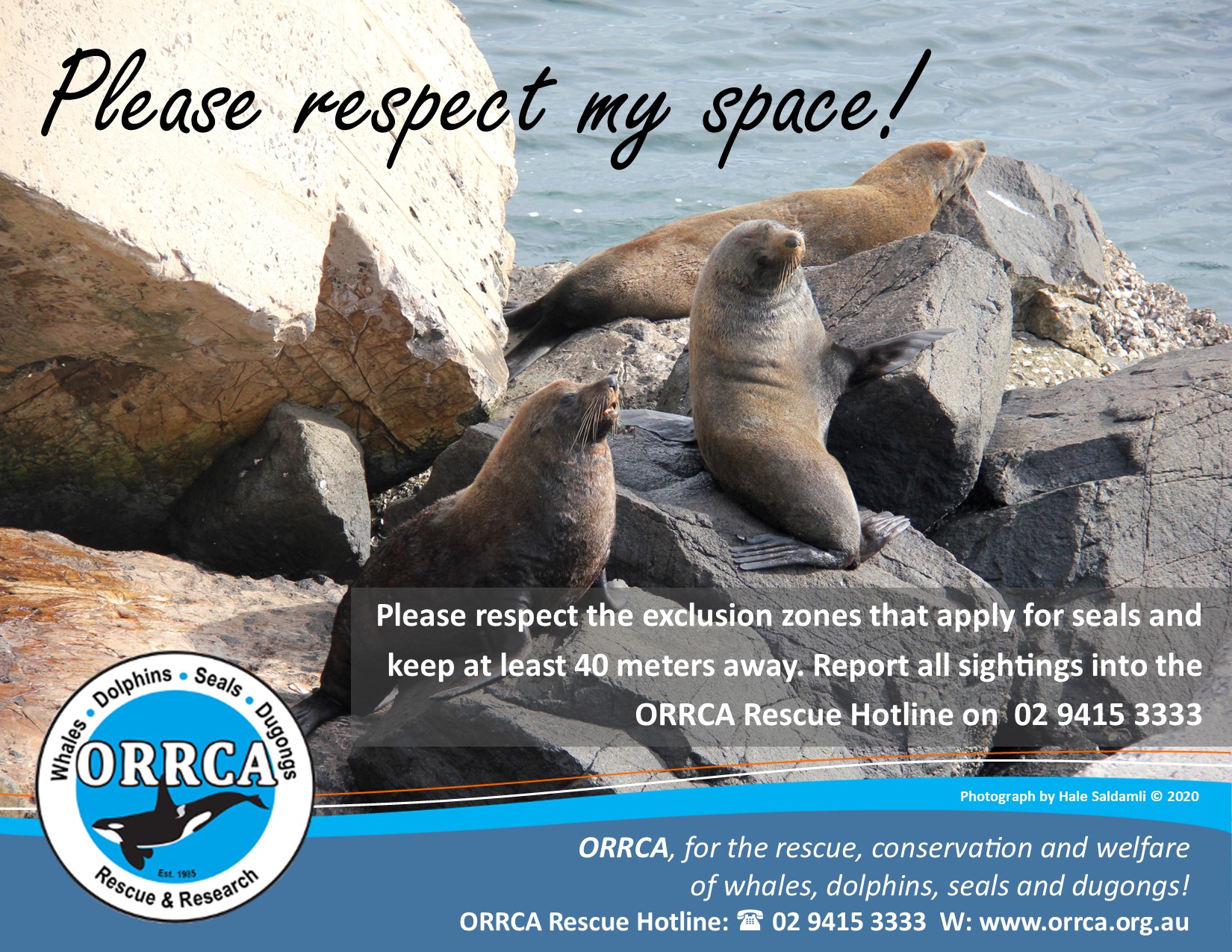
Bushcare In Pittwater
Where we work Which day What time
Avalon
Angophora Reserve 3rd Sunday 8:30 - 11:30am
Avalon Dunes 1st Sunday 8:30 - 11:30am
Avalon Golf Course 2nd Wednesday 3 - 5:30pm
Careel Creek 4th Saturday 8:30 - 11:30am
Toongari Reserve 3rd Saturday 9 - 12noon (8 - 11am in summer)
Bangalley Headland 2nd Sunday 9 to 12noon
Bayview
Winnererremy Bay 4th Sunday 9 to 12noon
Bilgola
North Bilgola Beach 3rd Monday 9 - 12noon
Algona Reserve 1st Saturday 9 - 12noon
Plateau Park 1st Friday 8:30 - 11:30am
Church Point
Browns Bay Reserve 1st Tuesday 9 - 12noon
McCarrs Creek Reserve Contact Bushcare Officer To be confirmed
Clareville
Old Wharf Reserve 3rd Saturday 8 - 11am
Elanora
Kundibah Reserve 4th Sunday 8:30 - 11:30am
 Mona Vale
Mona Vale Mona Vale Beach Basin 1st Saturday 8 - 11am
Mona Vale Dunes 2nd Saturday +3rd Thursday 8:30 - 11:30am
Newport
Bungan Beach 4th Sunday 9 - 12noon
Crescent Reserve 3rd Sunday 9 - 12noon
North Newport Beach 4th Saturday 8:30 - 11:30am
Porter Reserve 2nd Saturday 8 - 11am
North Narrabeen
Irrawong Reserve 2nd Saturday 2 - 5pm
Palm Beach
North Palm Beach Dunes 3rd Saturday 9 - 12noon
Scotland Island
Catherine Park 2nd Sunday 10 - 12:30pm
Elizabeth Park 1st Saturday 9 - 12noon
Pathilda Reserve 3rd Saturday 9 - 12noon
Warriewood
Warriewood Wetlands 1st Sunday 8:30 - 11:30am
Whale Beach
Norma Park 1st Friday 9 - 12noon
Western Foreshores
Coopers Point, Elvina Bay 2nd Sunday 10 - 1pm
Rocky Point, Elvina Bay 1st Monday 9 - 12noon
Gardens And Environment Groups And Organisations In Pittwater
Federal Environment Minister Approves Port Stephens Endangered Koala Habitat Destruction Of Over 128 Acres For Mine Expansion
are only undertaken where necessary or beneficial for conservation of the species or as part of an approved offset arrangement [for a state significant development]
[The ability to list local populations] could be really important and worth restoring so that those populations that have been really affected by these fires can get that additional attention.I think the results of these bushfires will show that certain populations are extremely stressed now. The ability to list populations could be a useful tool.
It became apparent during the preparation of the [BC Act] that these populations were going to be left out, which was an issue that we raised in our submissions and the resolution of that appeared to be that these three would be retained but there would be no further provision for additional populations. That was my understanding up until yesterday when I read through the submission to this inquiry from the [NSW Threatened Species Scientific Committee] which stated that those three [local populations] would be removed from the schedules [of the BC Act].
As the Koala is listed nationally as a Vulnerable species, Koala populations are no longer eligible to be listed under the BC Act. This is a requirement of a Memorandum of Understanding between the NSW Government and the Commonwealth which prevents the listing of individual populations where the species itself is listed. The three currently listed Endangered Koala populations will be removed from the schedules of the BC Act.
… The CAM will ensure there is consistent approach in the assessment of threatened species and ecological communities in Australia. Through information sharing and mutual recognition of assessments, national assessment undertaken by one jurisdiction may be accepted by other jurisdictions. This will ensure a species is listed at the same level of extinction risk at both the Commonwealth and State level and reduce the duplication of assessments.
Port Stephens Council's relaxed policy for residential tree removal means that most days we hear trees being felled in the streets around Tanilba Bay and our home in Lemon Tree Passage. This leaves the koala corridors disjointed making it difficult for them to travel freely and find mates and is almost certainly a factor in the change in sighting patterns in the Tilligerry Habitat. Programmes to replace felled trees with new planting do nothing to alleviate the immediate problem as is take approximately thirty years for a Eucalyptus Robusta to reach the size needed to become a koala food tree.
Port Stephens Koala volunteers in the Habitat group have continued efforts to preserve koala habitat by writing submissions, seemingly without any success. Our efforts are raising the profile of PSK to become known as a protector of habitat, not just a rescuer of koalas, through all these submissions.We feel, like many others, that the Black Summer of 2019-2020 saw such extensive destruction of koala habitat that it is likely that thousands of koalas met their death in the infernos. In some areas it is considered that 80% were destroyed.
On 30 June 2020 the NSW Legislative Council was presented with a report on Koala populations and Habitat in NSW, from the Portfolio Committee Chaired by Cate Faehrmann, MLC. The report took a year to compile and includes submissions from many organisations, including ours. The report makes 42 recommendations, recognising that the koala is in dire straits and that their extinction in the wild is highly likely by 2050 unless all levels of government, and all departments, coordinate an approach to conserve their habitat.
We have already met with Port Stephens Council staff to discuss the report and how to revitalise the Port Stephens Comprehensive Koala Plan of Management (CKPOM) intention to preserve habitat and restore connections between disrupted corridors that are essential for koalas to find breeding partners and for young to disperse. We will continue to work on this front, no matter how dis-heartening the results of our endeavours to date.
NSW Government-Owned NSW Forestry Corporation Currently Logging In Key Critically Endangered Swift Parrot Habitat
Conservation status in NSW: Endangered
Commonwealth status: Critically Endangered
Gazetted date: 24 March 2000
BirdLife Australia is holding a webinar on Friday November 6th to share information on why protecting the habitats of this bird in NSW is vital.
In September 2020 a new report from BirdLife Australia showed that the massive fires that swept across many parts of Australia in the past year had a dramatic effect on the areas most critical for the survival of our unique and threatened wildlife — our Key Biodiversity Areas (KBAs). In 18 KBAs, over 15 per cent was burnt, with some having up to 100 per cent of their habitat burnt but the report maps out not just the areas devastated by the fires, but also a path to recovery.
The report identifies five bird species including the Superb Lyrebird and the Rufous Scrub-bird that had over 40 per cent of their habitat burnt during just one horrific fire season. As a result, the importance of unburnt habitat remaining in Key Biodiversity Areas has only increased. For instance, up to 85 per cent of the unburnt habitat left for Rufous scrub-bird is now found inside these nature hotspots.
But all is not lost according to BirdLife Australia KBA Program Manager, Dr Golo Maurer.
“While it was heartbreaking to see so much unique bushland go up in flames, that just makes our conservation work in KBAs even more important. This report identifies meaningful actions that our local nature champions—the indefatigable KBA Guardians—will be taking to monitor the impacts of the fires and the ongoing recovery of wildlife in these areas.”
BirdLife volunteers have already started post bushfire monitoring, identifying sites that harbour survivors of the conflagration. Numerous bird survey sites have been set up in KBAs such as the Greater Blue Mountains KBA and BirdLife Australia is calling on the public to use the free Birdata app to record birds at these sites to help us develop a recovery strategy for these birds.
“Nature will make a comeback in these areas,” said Dr Maurer, “if we recognise the need to properly conserve all remaining habitat. Every remaining area of nature is even more important now, as a refuge and as the starting point for the recovery of Australia’s glorious native bush. Yet incredibly, some areas are still being logged.”
“To drive bushfire recovery, we need to use our knowledge of birds to guide conservation action and above all realise that all that is burnt is not lost.”
You can download ‘Bushfire recovery where it matters most: Impacts and actions in Key Biodiversity Areas affected by the 2019/20 Bushfire Crisis’ here.
To find out more about your local KBA and how you can become a KBA Guardian, click here.
To sign up to be part of the Swift Parrot webinar on this coming Friday, 12-1pm November 6th, visit: https://www.actforbirds.org/protect-swift-parrot-webinar
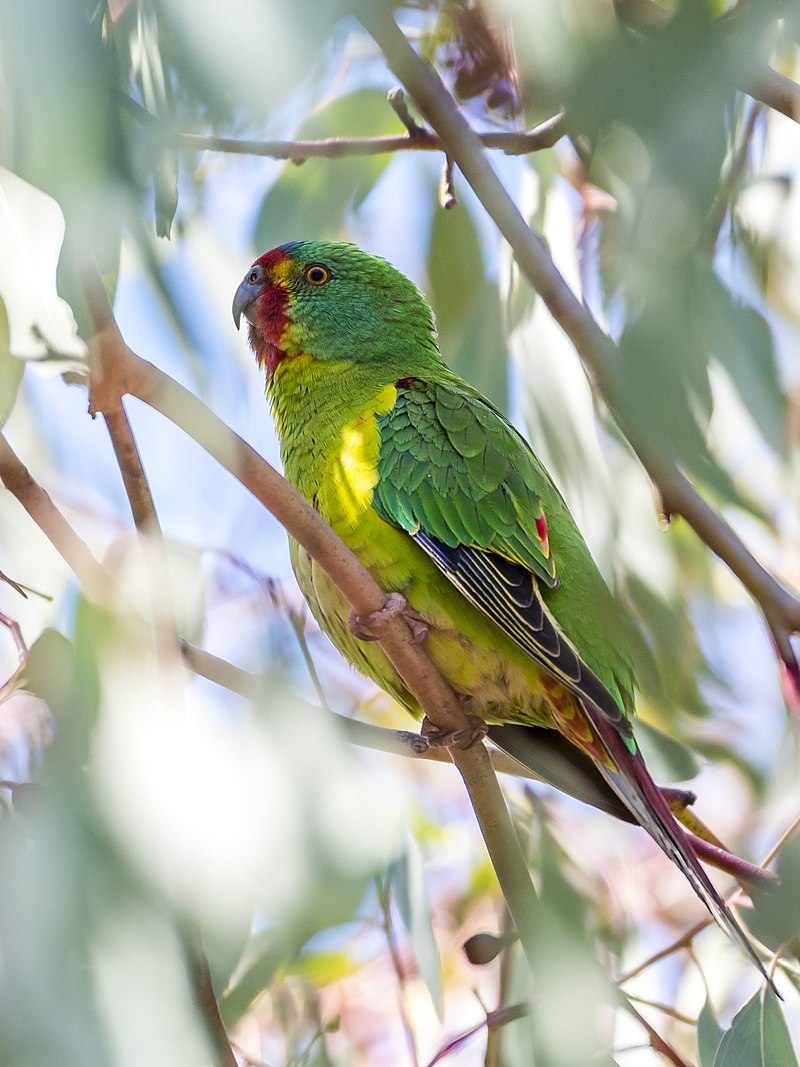
Swift Parrot - photo by Gunjan Pandey
NSW State And Federal Bushfire Inquires Done: Still No Recommendations To Save The Next 3 Billion Animals Or Support Volunteer Carers In The Firegrounds Afterwards - Do State & Federal Governments Expect Local Or Overseas Agencies And Volunteers To Pick Up The Tab Again & Again & Again?
Amongst the raft of recommendations from final reports and political announcements made this week about millions of dollars to be spent to forestall the next firestorm no announcement regarding co-ordinating or supporting the volunteers who attend to wildlife after fires have been made.
It seems both the Australian and New South Wales governments expect those who work in this field here as volunteers, and have done so for decades, to keep doing the work, to keep footing the bills, and when exhausted, for those overseas volunteers to come in and do the work and foot the bills as well.
No one has got their backs except those families they return home to, emotionally distraught, and all who donate money so they can buy medicines and food for what's left.
The welfare of wildlife itself does not feature too much either - no 'slow burns' to ensure impacted animals may escape; they cost a little more than the 'get it done now' method, no requirement for wildlife carers or veterinarians to be present while 'hazard reductions' are taking place alike that which incinerated all wildlife in its path on North Head at Manly a few weekends back - just more of the same - and more failure as a result - and key workers in these fields being pressured from above to risk themselves, wildlife and communities so politicians, Australians politicians, can save face after helping create the firestorm that nothing was going to stop.
In April, BirdLife Australia provided a submission to the Royal Commission into National Natural Disaster Arrangements on the heavy cost of the Black Summer fires on our birds. Their analyses suggested that 45 bird species had more than 30 per cent of their habitat affected by fire – and as a result, birds previously thought to be secure now require urgent and ongoing conservation action, including the beloved Superb Lyrebird and Gang-gang Cockatoo. Inappropriate fire regimes and catastrophic wildfires are the biggest threat facing many Australian birds and other wildlife today.
The submission emphasised the need to adopt an evidence-based approach to both preparing for and responding to bushfires and other natural disasters.
Catastrophic bushfires are expected to become more common due to climate change – which is why reducing greenhouse gas emissions and increasing funding for threatened species recovery is so important as we prepare for yet another bushfire season.
This week the full report of the Royal Commission was released.
BirdLife Australia is disappointed that, while the report acknowledges the value of Australia’s biodiversity and the devastating impacts of the 2019-20 bushfire season on wildlife, it makes only one recommendation directly related to wildlife (Recommendation 16.1) and no recommendations for reducing or responding to impacts of fire and other disasters on wildlife.
BirdLife acknowledges that private landowners need to manage fuels on their land to reduce fire risk to life and property and supports the call for greater clarity on the requirements and scope for undertaking bushfire hazard reduction activities. However, any new guidelines must emphasise that fuel reduction activities typically provide benefits only when conducted in close proximity to the asset being protected, and areas of high conservation value located away from assets must be protected from indiscriminate clearing of vegetation in the guise of hazard reduction.
Read the full report here.
Similarly the New South Wales Wildlife Council, the peak body for wildlife rehabilitation in NSW which represents 26 licensed wildlife rescue groups across the state with a membership of approximately 4,000 volunteers or just over 50% of all licensed wildlife carers in the state, made a submission to the NSW Bushfire Inquiry, also ignored in the announcements of spending '$192 million over 5 years' made this week despite Recommendation 53 of that final report.
Critics wonder which government would deign insert the words 'coal' and 'coal mining' into Environment legislation should that 3 billion also get to vote.
Either way, our wildlife, our environment, our wildlife carer volunteers and their families are left to pick up the tab again.
Tick Population Booming In Our Area
Residents from Terrey Hills and Belrose to Narrabeen and Palm Beach report a high number of ticks are still present in the landscape. Local Veterinarians are stating there has not been the usual break from ticks so far and each day they’re still getting cases, especially in treating family dogs.
To help protect yourself and your family, you should:
- Use a chemical repellent with DEET, permethrin or picaridin.
- Wear light-colored protective clothing.
- Tuck pant legs into socks.
- Avoid tick-infested areas.
- Check yourself, your children, and your pets daily for ticks and carefully remove any ticks using a freezing agent.
- If you have a reaction, contact your GP for advice.
 Shorebird Identification Booklet
Shorebird Identification Booklet
The Migratory Shorebird Program has just released the third edition of its hugely popular Shorebird Identification Booklet. The team has thoroughly revised and updated this pocket-sized companion for all shorebird counters and interested birders, with lots of useful information on our most common shorebirds, key identification features, sighting distribution maps and short articles on some of BirdLife’s shorebird activities.
The booklet can be downloaded here in PDF file format: http://www.birdlife.org.au/documents/Shorebird_ID_Booklet_V3.pdf
Paper copies can be ordered as well, see http://www.birdlife.org.au/projects/shorebirds-2020/counter-resources for details.
Download BirdLife Australia's children’s education kit to help them learn more about our wading birdlife
Shorebirds are a group of wading birds that can be found feeding on swamps, tidal mudflats, estuaries, beaches and open country. For many people, shorebirds are just those brown birds feeding a long way out on the mud but they are actually a remarkably diverse collection of birds including stilts, sandpipers, snipe, curlews, godwits, plovers and oystercatchers. Each species is superbly adapted to suit its preferred habitat. The Red-necked Stint is as small as a sparrow, with relatively short legs and bill that it pecks food from the surface of the mud with, whereas the Eastern Curlew is over two feet long with a exceptionally long legs and a massively curved beak that it thrusts deep down into the mud to pull out crabs, worms and other creatures hidden below the surface.
Some shorebirds are fairly drab in plumage, especially when they are visiting Australia in their non-breeding season, but when they migrate to their Arctic nesting grounds, they develop a vibrant flush of bright colours to attract a mate. We have 37 types of shorebirds that annually migrate to Australia on some of the most lengthy and arduous journeys in the animal kingdom, but there are also 18 shorebirds that call Australia home all year round.
What all our shorebirds have in common—be they large or small, seasoned traveller or homebody, brightly coloured or in muted tones—is that each species needs adequate safe areas where they can successfully feed and breed.
The National Shorebird Monitoring Program is managed and supported by BirdLife Australia.
This project is supported by Glenelg Hopkins Catchment Management Authority and Hunter Local Land Services through funding from the Australian Government’s National Landcare Program. Funding from Helen Macpherson Smith Trust and Port Phillip Bay Fund is acknowledged.
The National Shorebird Monitoring Program is made possible with the help of over 1,600 volunteers working in coastal and inland habitats all over Australia.
The National Shorebird Monitoring program (started as the Shorebirds 2020 project initiated to re-invigorate monitoring around Australia) is raising awareness of how incredible shorebirds are, and actively engaging the community to participate in gathering information needed to conserve shorebirds.
In the short term, the destruction of tidal ecosystems will need to be stopped, and our program is designed to strengthen the case for protecting these important habitats.
In the long term, there will be a need to mitigate against the likely effects of climate change on a species that travels across the entire range of latitudes where impacts are likely.
The identification and protection of critical areas for shorebirds will need to continue in order to guard against the potential threats associated with habitats in close proximity to nearly half the human population.
Here in Australia, the place where these birds grow up and spend most of their lives, continued monitoring is necessary to inform the best management practice to maintain shorebird populations.
BirdLife Australia believe that we can help secure a brighter future for these remarkable birds by educating stakeholders, gathering information on how and why shorebird populations are changing, and working to grow the community of people who care about shorebirds.
To find out more visit: http://www.birdlife.org.au/projects/shorebirds-2020/shorebirds-2020-program
Pittwater Reserves
Aussie Bread Tags Collection Points

Halloween 2020 In Pittwater
Photo by Joanne Seve
Rockley Was Cricket For Girls 130 Years Ago - They Visited Narrabeen Too!
With the end of the football seasons of rugby and soccer the commencement of the cricket playing days begin, with some great local clubs you can get involved with and have a great time and make new friends over the coming Summer. So many girls as well as boys are now playing this game, we thought we'd share a letter to Dame Durden from over 100 years ago about a version of this game that was just for girls. 'Dame Durden' was the name Ethel Turner (author of Seven Little Australians and who would come to Palm Beach from Mosman each Summer) wrote under for the children's columns in the Illustrated Sydney News and later for the Australian Town and Country Journal, two newspapers that were great at publishing drawings and letters from Australian children for a long time.
THE ROCKLEY GAME
FROM the archives of the Rockley Mill and Stables Museum.
In the 1890s, John O’Hara, an inspector for the Land District of Bathurst and Lithgow, invented a new game for 14-year-old school girls. Launched at Triangle Flat in about 1892, it was taken up with so much enthusiasm in the nearby village of Rockley that it became known as the Rockley Game.
Teams were generally 13 in number and team captains were known as queens.
Each team adopted a distinguishing coloured sash which was worn around the waist.
A boy’s bat was used and the ball was only slightly bigger than a tennis ball, so pads were unnecessary.
Rockley cricket spread rapidly through the Central West and by 1899 there were 700 girls playing in the Western Districts. Matches were played between villages and towns and when teams travelled to other places they were always chaperoned.
Trips to play teams in other locations included concerts, visits to places of interest and educational outings for the girls.
When Mr O’Hara was appointed to Queanbeyan in September 1899, he established the Rockley Game in Queanbeyan with great success.
Into the 20th century, the Rockley Game was played at Albury, Moruya, Queanbeyan, North Sydney, Port Macquarie and Broken Hill.
THE RULES
Teams usually had 13 players.
Each team was identified by a coloured sash.
The team captain was known as a “queen”.
The playing area was a circle 80 yards in diameter, marked out with flags and stumps 15 yards apart.
Overs were six balls.
Bowling was from one end only.
There was no running between wickets.
There were no byes or wides and no appeals.
One run was scored for each ball hit.
Seven runs were awarded for a boundary.
Here's a letter to Dame Durden from one of these players on a team that came to Sydney in the Summer of 1901 - as you can see, they also visited Narrabeen and Manly and there were teams they played against on the north shore of Sydney:
Queanbeyan.
Dear Dame Durden,-A little bird whispered in my ear that I should be the lucky one to win your prize last month. Thank you very much; it is just the sort of book that I am fond of reading. The first Sunday after I received it was wet; but I became so interested in my book that I took no notice of the weather.
My letter this time is about the southern district representative rockley players' tour to Sydney. We left on the first of November, instead of the 8th, on account of a cheap train going then. Eleven girls started from Queanbeyan, and we picked up the others as we went along. We had an engaged carriage, so we were able to be together. We were all so excited that we could not sleep. Some of the girls had never been in a train before, and hardly any of them had been to Sydney.
Reached Sydney at ten to 6, and a van took our luggage to Paddington. We arrived at about the same time as it did. After breakfast we went over to North Shore. We only had time to play a one-innings match, as the cricketers had engaged the ground for 1 o'clock. R.S.D.R. players won the toss, and batted first, and made 158 runs. Then the Narremburn School girls went in, and made 91 runs; so we won our first match by 67 runs.
Play over, we went to Balmoral, and had a picnic, the Narremburn girls providing the edibles. Balmoral is an ideal place for a picnic, only it is rather a long distance to walk after leaving the tram; but the scenery is very pretty, so that is some compensation for our long walk. We arrived at Mrs. Tabrett's, Moore Park, at half-past 7, and had tea; then, thoroughly tired, tumbled into bed. Thus ended our first day In the great city.
Sunday morning we all went to St. Matthias's Church, Paddington, and after dinner visited the Zoological Gardens, and St. Andrew's Cathedral at night.
Monday morning we spent a jolly time at Manly, and in the afternoon Mr. O'Hara engaged a coach, and took us to Narrabeen. It is a very pretty drive, and we thoroughly enjoyed ourselves. Mr. O'Hara got a three-bushel bag and a sieve, and we got over a hundredweight of shells. Mr. O'Hara pointed out a lot of interesting places along the road.
On Tuesday most of us went to Coogee, and had a bathe. As it was the first time any of us had had a real bath in the salt water, you can guess we enjoyed it. After breakfast we went to the Victoria Markets, and from there to the Crown Studios. We then had dinner at Mr. Quong Tart's; he was very pleased to see us, and invited us to an afternoon tea. Afterwards, we went to Gore Hill; from here the best and prettiest views are seen of Sydney. Houses on every side of you, to the front, and to the back. It also gives one an idea of how thickly populated Sydney is. Gore Hill won the toss, and batted first. Dr. Kingsbury was umpire; they made 74 runs. During our first innings, a storm broke up the game; but, although only four of our girls were out, we had beaten the Gore Hill girls by 37 runs; so, you see, they were no match for us.
On Wednesday morning, we went to the Art Gallery and Museum, and had lunch in the Government Gardens; visited the Cyclorama in the afternoon, and Mr. O'Hara asked the people there to sing "The Holy City" for us, and they kindly sang some other songs as well. Thursday morning, we went up the Lane Cove River for a picnic; and all along the scenery was very beautiful. We saw the Sobraon, Cockatoo Island, and the men building the Woolwich Dock. We found a very nice picnic spot under some shady trees, where we had lunch; then we played some games.
After we came back from our trip up the Lane Cove River, we all went up the Post Office Tower, and it was lovely. It was just like as if you were up in a balloon; the houses and the people in the streets looked so small. Mr. O'Hara pointed out a lot of the principal buildings, etc., and we easily picked out the spot where our house was situated. From the street to the top of the tower there are 373 steps. Our legs were very shaky when we got down. Then we went all over the "Evening News" and "Town and Country Journal" Office, and we enjoyed it very much, only it was so very hot. I wouldn't Care to work there; it Would be far too hot for me. The men working the linotypes gave us our names in metal. At night, we all went to Her Majesty's Theatre, where "The Christian King" was being played for the last time. It was lovely, and all enjoyed it immensely. As you will imagine, we were all pretty sleepy on Friday, and in the morning we just stayed at home and amused ourselves. Some of us slept, and others read.
After dinner, we went through the arcades. Thence we went to Mr. Quong Tart's. Several friends were there, and we had a very nice time. The table was set T fashion, and was loaded with the good things Mr. Quong Tart had provided, and interspersed with the fruit and edibles were flowers tastefully arranged. After tea, the following toasts were drunk: "Mr. O'Hara," "Mrs. Fallick," "The Press," "Mr. and Mrs. Quong Tart." Then Mr. Quong Tart sang two Scotch songs, and Miss O'Hara, Jean Pollack, and Studie Hudson gave some musical selections. Annie Styles and Daisy Fell recited, and Una Gates sang "The Pardon Came Too Late." Mr. Tart let the curtain fall, and fixed up some tableaux. He wrapped a big flag round Mrs. O'Hara, and told us that she was Queen Victoria, and mother and Miss O'Hara, were 'the maids of honor. After this came the event of the evening. Mrs. O'Hara, on behalf of her son, presented us all with gold brooches, Mrs. Tart pinning them on for us. The brooches were inscribed R.S.D.R.P., 1901 (Representative Southern District Rockley Player). Mr. Tart made a very nice speech, and told us we should never lose our tempers. If. we were bowled, stumped, or caught, we should not throw down our baits in temper, but say the bat was greasy, the ground slippery, etc.
On Saturday morning we went to Katoomba. There was a great crowd on the station, and the train was very full. It was a rather dirty trip, and our cuffs and collars were not very white when we arrived at our destination. Although the air is very fresh, Katoomba is not a town I should care to live in; it is too dirty to suit my fancy. The hills looked lovely and blue away t in the distance; but it was very hot, and we did not play at all well; indeed, we played very poorly.. The Katoomba girls beat us by 72 runs. The Katoomba girls kindly provided tea for us. Afterwards we started for Sydney.
Coming back it was very pretty, especially Penrith-the lights shone like so many stars in the distance. Sunday morning we were all very tired, and only a few of the bigger girls went to 'church; the rest stayed at home. After dinner Mr. O'Hara came over, and we went to the National Park, and when we came back we went to the Centenary Hall. Mr. Taylor preached a splendid sermon to young men; we all enjoyed lit, as well as the music.
Monday morning we went over to North Shore, and played the pick of North Shore, Gore Hill, and Sydney girls. Determined to make up for the match we had lost, we all played our best, with the result that our score was 171, one of our girls (Edith M'Pherson) making 110 runs, and another took three wickets for 1 run in an over. The Sydney girls' made 34 runs each innings. After this match was finished we all went for a picnic at the Spit, and, coming back; we played a team of boys, who thought that they could beat as easily, but they were "had," as we beat them by 21 runs. Tuesday is all hurry and scurry to find this, that, and the other, and cries of "I can't find this," and "Someone has taken that." You never in all your life heard such a din. But at last everything is packed and ready. Mr. O'Hara came over, and we went through Hyde Park, and saw Governor Phillip's statue, Captain Cook's, Queen Victoria's, Prince Albert's, Parliament Houses, and went through the Palace Gardens. Afterwards we all went shopping. In the afternoon the rain drove us indoors, and soon after tea we were all en route for the station, where many friends came to bid us au revoirs and see us start for "home, sweet home."
Well, dear Dame, I think I have told you all about the R.S.D.R. players' visit to Sydney, and with kind wishes from your rockley friend, I will conclude.
Mabel Fallick (aged 16 years).
P.S.-I was very sorry that you were away while we were down. I should have liked you to see us play. I hope you enjoyed your holiday as much as we did ours.
Dame Durden's Post Office. (1902, January 4). Australian Town and Country Journal (Sydney, NSW : 1870 - 1907), p. 40. Retrieved from http://nla.gov.au/nla.news-article71518507
The State Library of NSW tells us that Mei Quong Tart, or Quong Tart as he was known, was a famous and popular figure in Sydney in the late nineteenth century. Quong Tart was born in China in 1850 and came to the goldfields near Braidwood at age nine. He was taken in by a local family, the Simpsons, from whom he learned English and became an Anglican. They were Scottish people and later he would attend official functions dressed in a kilt or traditional Chinese clothes. He made his initial wealth by speculating in gold claims, but his popularity was due to his active involvement in the sporting life of the area. He was captain of the local cricket team, founded a football team and promoted horse-racing.
In 1881 he visited China to see his family and on returning to Australia started business as a tea merchant in Sydney. At his small tea house, he served samples of his imported tea; it became so popular he opened a chain of them. In 1886 Quong Tart married an Englishwoman, Margaret Scarlett, and they eventually had six children!
In 1889 Quong Tart opened his Loong Shan Tea shop in King Street. It soon became famous and was frequented by Governors and Premiers. Louisa Lawson, mother of the poet Henry Lawson, sipped tea in the Loong Shan while she organised the campaign for female suffrage in Australia. In 1898 Quong Tart opened the Elite Hall in the Queen Victoria Building. It was a very luxurious tea house and restaurant which could hold 500 people.
The popularity of these shops was due to the quality of the tea, the excellent food, the rich and exotic furnishings and the nature of Quong Tart himself. He dressed as a European, treated workmen and politicians in the same manner; he was a great philanthropist, holding many benefits for charity, and he was a generous employer. He was also active on behalf of other Chinese in Australia, and the Chinese Emperor appointed him a Mandarin for these efforts.
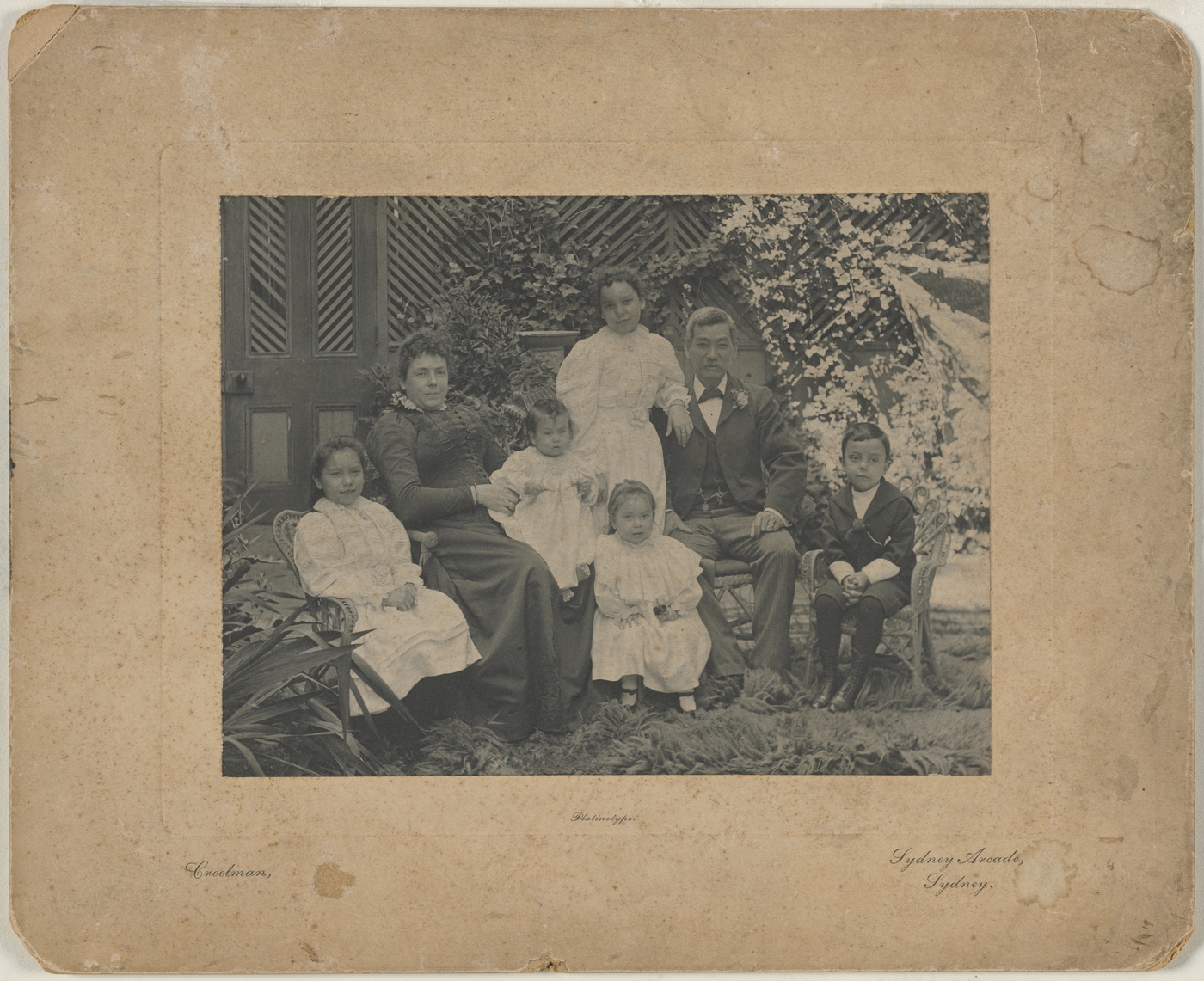
Quong Tart and family [ca. 1899-1900] / Creelman & Co. [Taken outside the fernery at Gallop House, Ashfield. L to R: Henrietta, baby Florence, Maggie (at front), Vine and Arthur] - image courtesy the Mitchell Library, State Library of NSW.
Two years ago, when researching what we today call the Village Park at Mona Vale where one of Pittwater's early cricket pitches was and was then called 'Taramatta' and in some versions 'Tarameta' Park, possibly after the name we now give to Turimetta Beach between Narrabeen and Warriewood, an article about an early Sydney women's Cricket team was found. This had some photos of that team and shows you what these girls had to play in during hot Summers - imagine running between wickets in this:
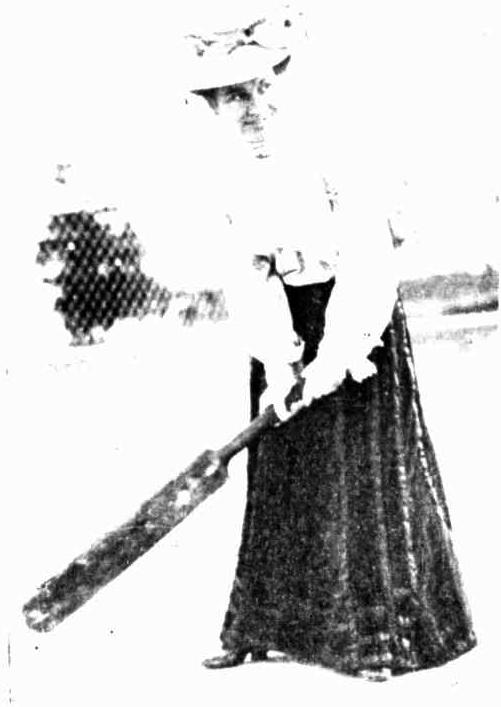
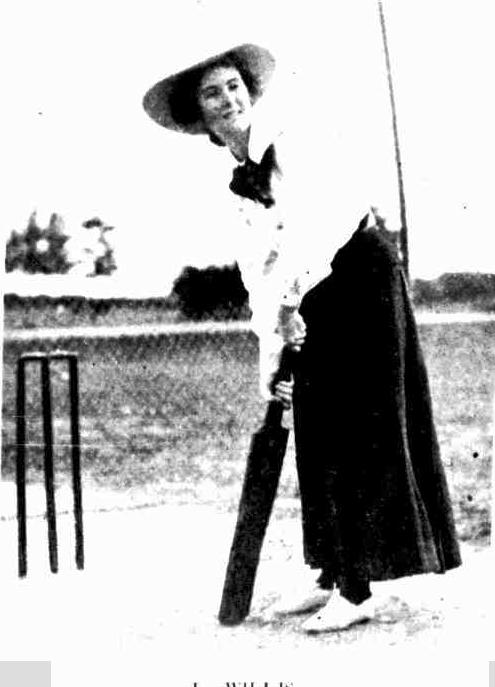
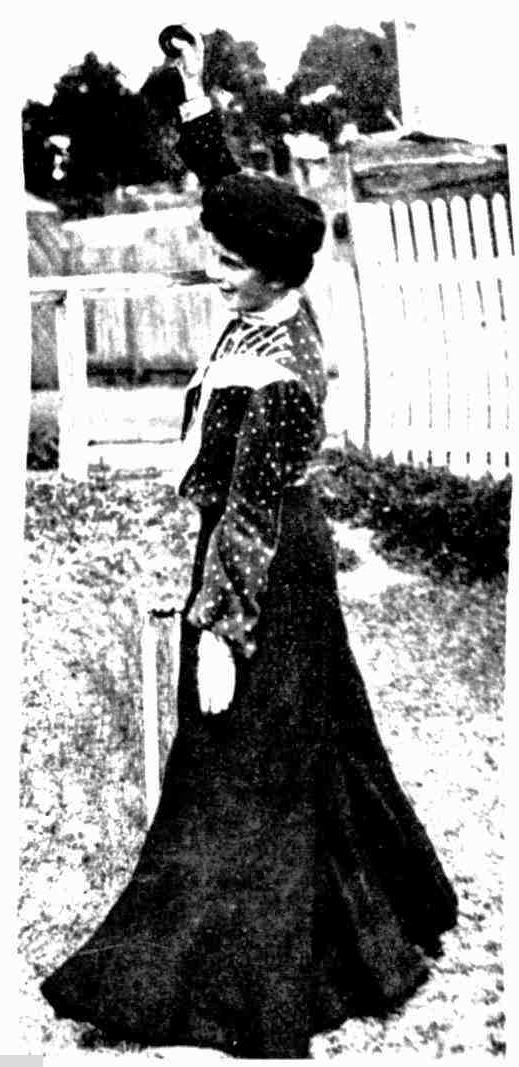
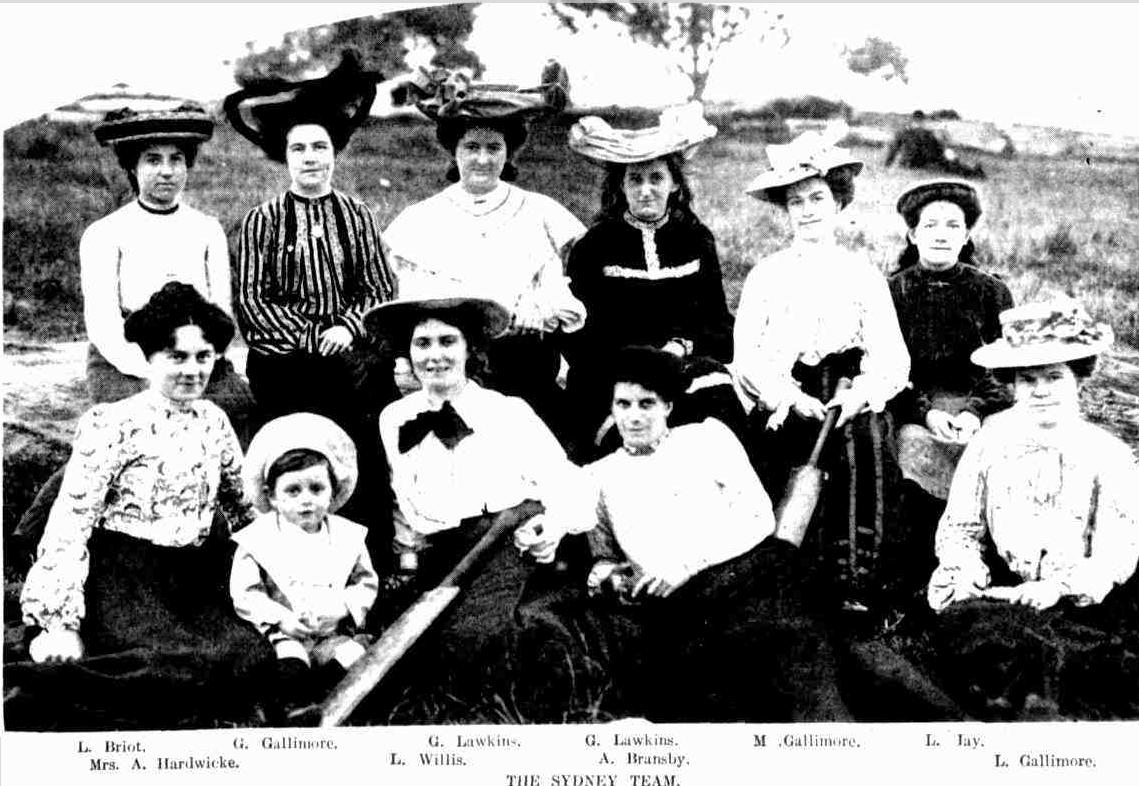
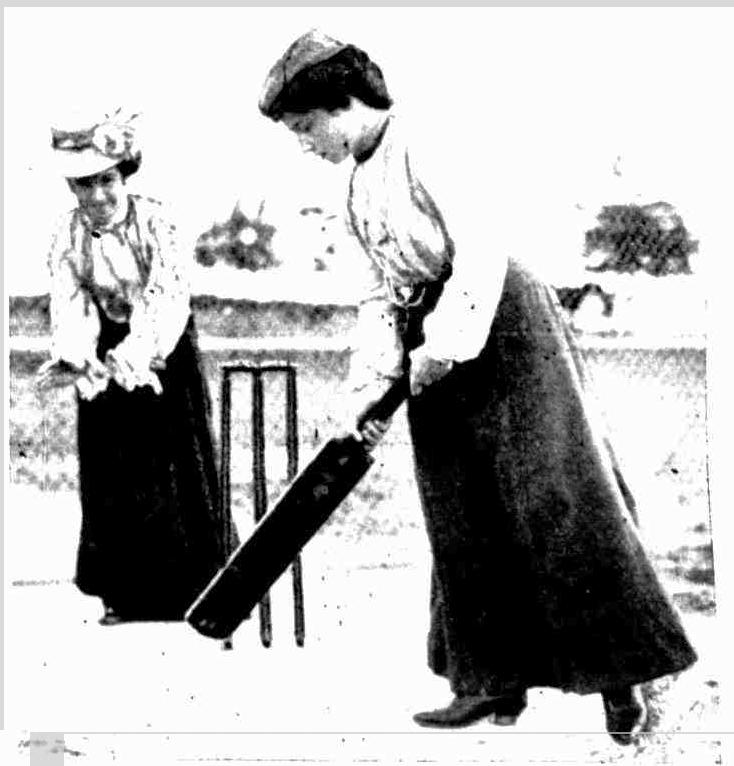

.jpg?timestamp=1591238420489)
.jpg?timestamp=1591238446567)
.jpg?timestamp=1591238470418)
.jpg?timestamp=1591238497419)
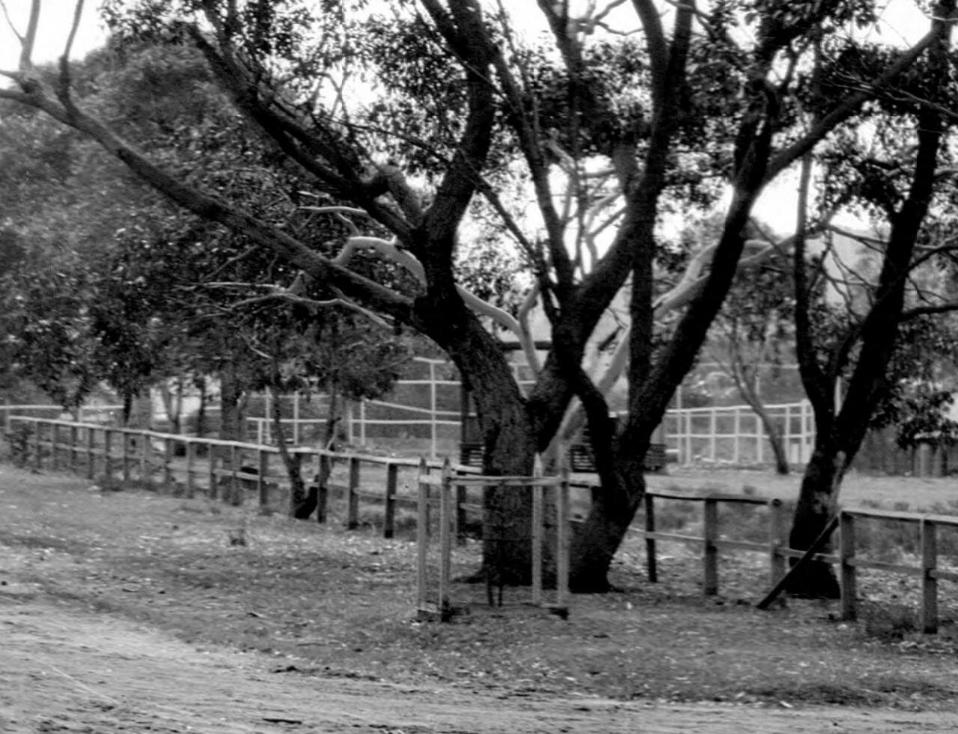
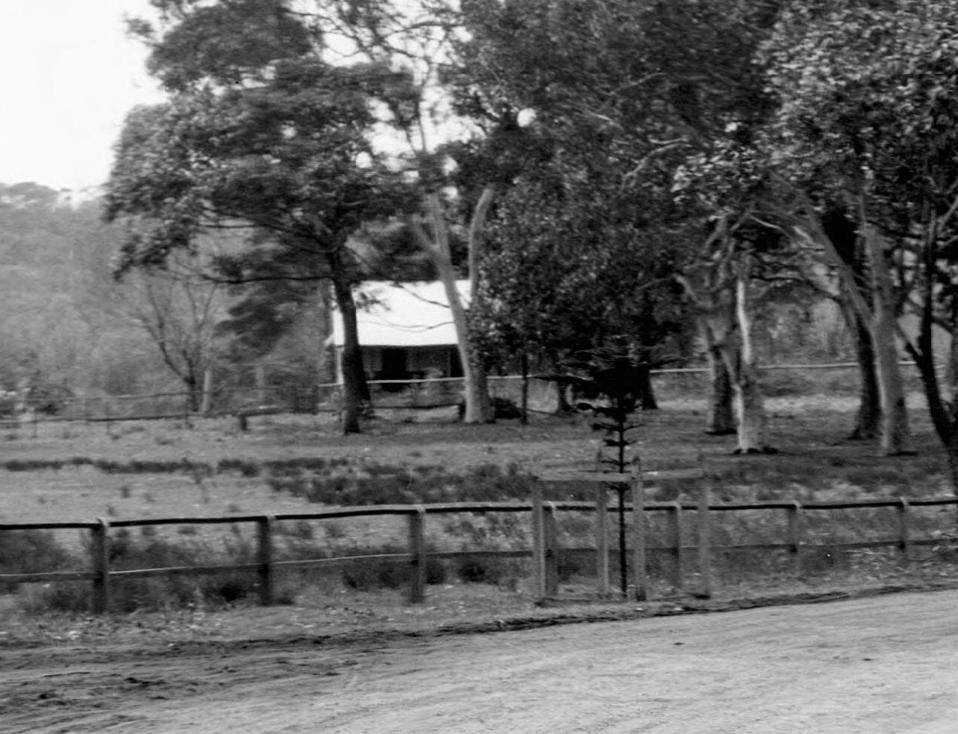
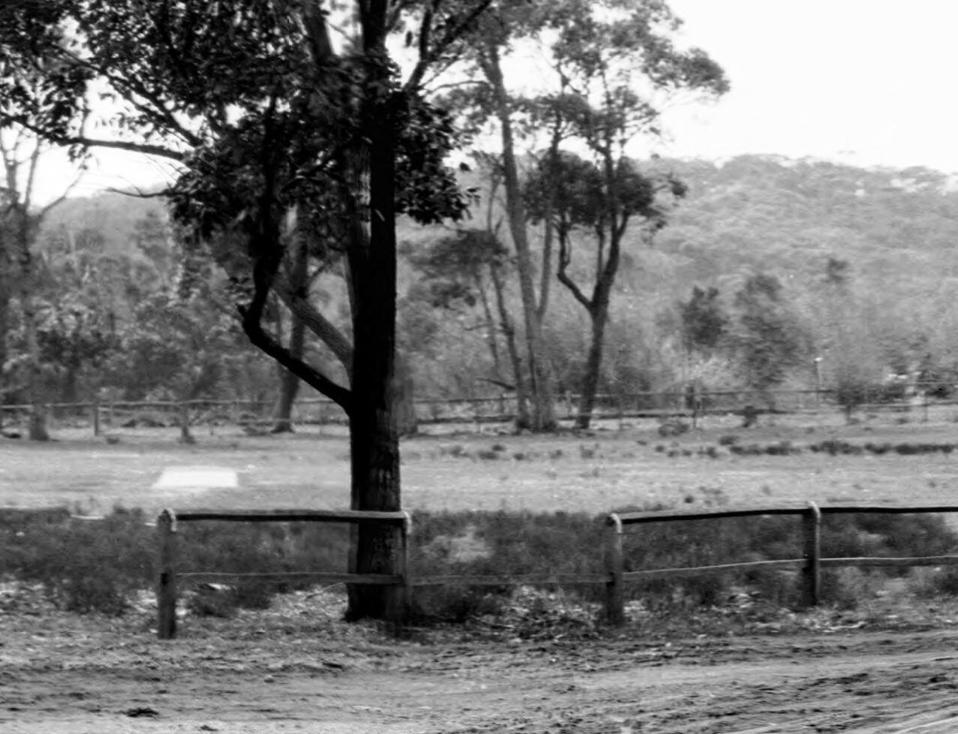
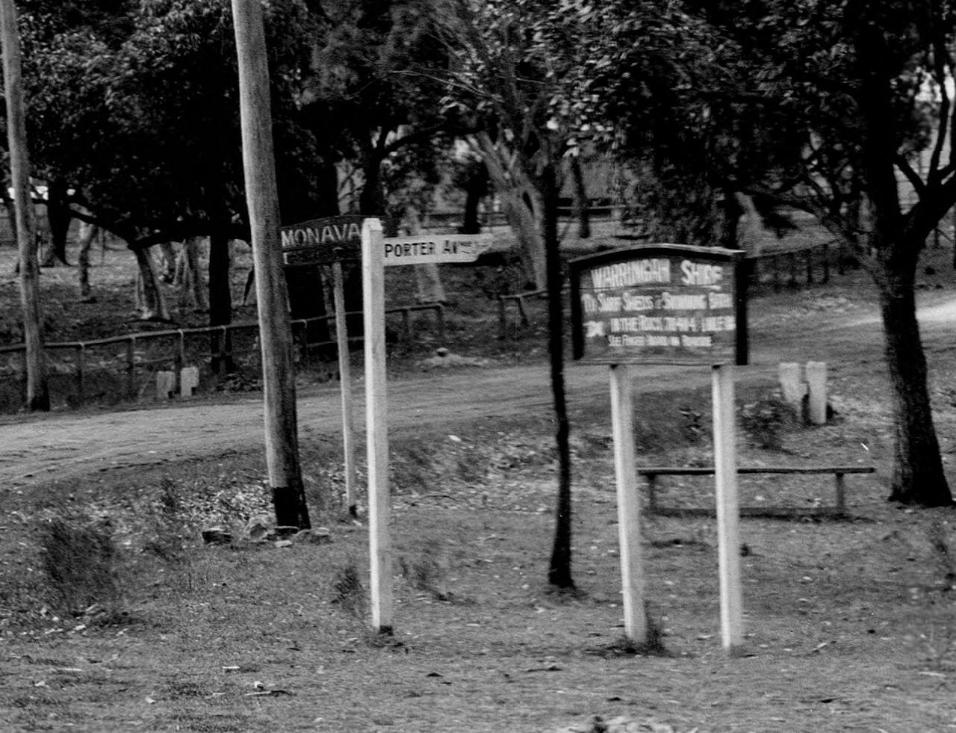
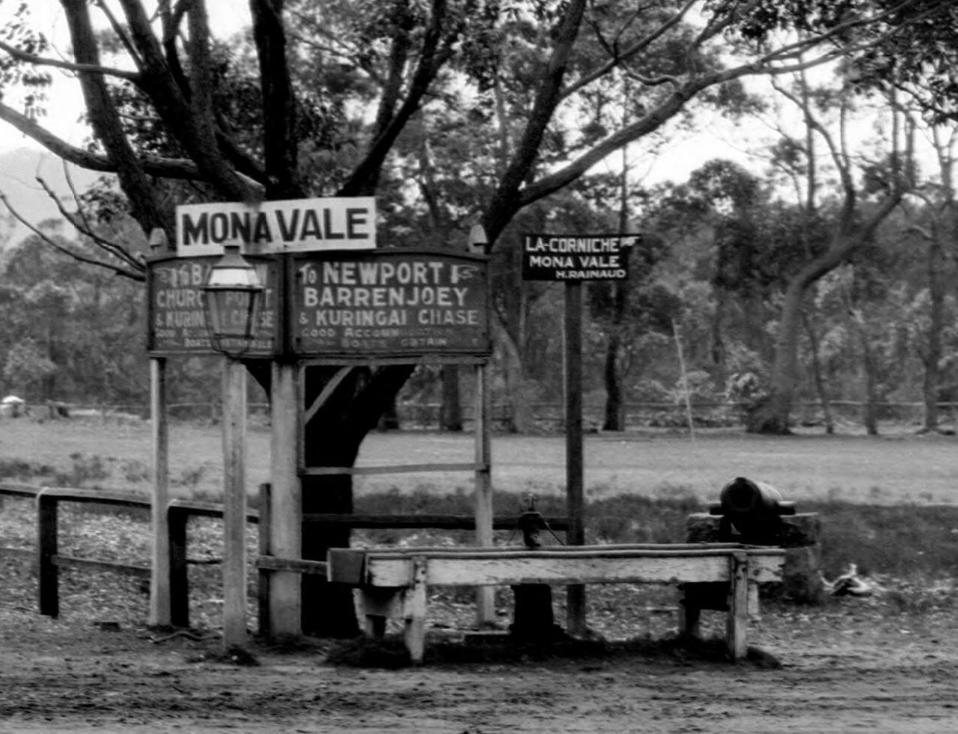
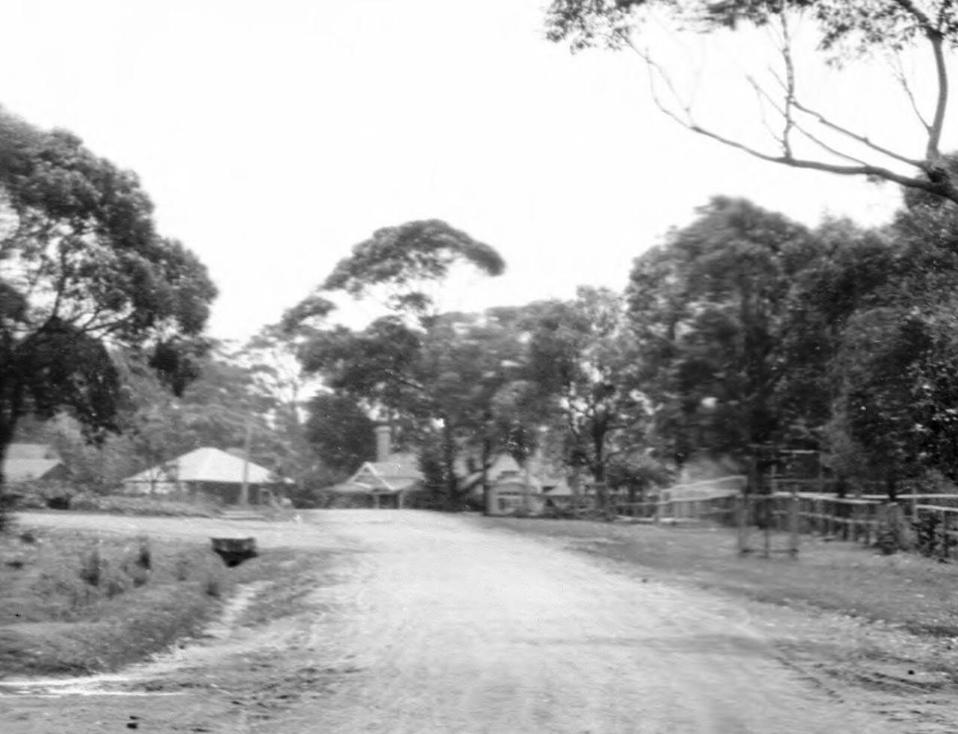
CRICKET.
A team from the newly formed Mossman's Bay Club journeyed to Newport on Saturday, to play the Newport C.C. The ground is about 300 yards from the ocean beach, and with very little trouble could be made into a splendid ground. Matting was laid upon it, but the long grass prevented it from setting evenly, and this made the ball cut many capers. Mr. Forester captained Newport, and Mr. Jackson the Mossman's Bay team. Newport won the toss, and went in to bat, but through the excellent bowling of Jackson and Oatley weredisposed of for 21, Jackson securing six wickets for 9 runs, and Oatley three for 11. Mossman's Bay replied with 115 (Jackson 62 and Clarke 25), W. Boulton and J. Boulton being the most successful bowlers. In their second attempt the Newport fared very little better as they were all disposed of for 34 (J. Boulton 14 not out), Oatley and Clarke bowling throughout this innings, the former securing seven wickets and thelatter three, Mossman's Bay thus won by an innings and 60 runs. CRICKET. (1892, May 11). The Sydney Morning Herald (NSW : 1842 - 1954), p. 8. Retrieved from http://nla.gov.au/nla.news-article13843733
It just shows you how long cricket has been a Summer sport, alongside sailing and going swimming, around here!
The Bush Turkey: One Of Our Local Birds In Back Yards With A Southern Cross Star Pattern Link
For decades now either side of our place has been a thoroughfare for Bush Turkeys. They choose to go through here to meet up with other bush turkeys down along Careel Creek and head back to the bush above Whale Beach and Careel Head. Previous Issues have shared images of some of their young, unaccompanied by adults, also making their way through the yard and yard backing onto here, where our neighbours have put a bit of effort in to create a bush path for them.
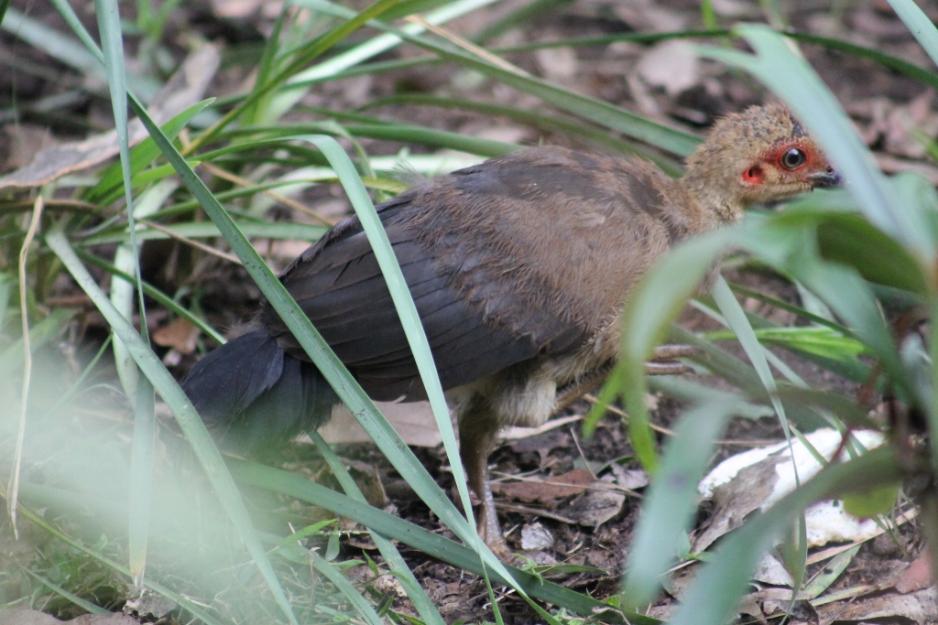
A young Brush-turkey that was scratching around in our backyard in 2012 at this time of year.
Brush- turkeys or Bush Turkeys (Alectura lathami) as they are sometimes called, belong to the megapodes family, meaning that they are incubator birds or mound-builders, and build large nests in which to incubate their eggs; the heat generated, like in compost bins, from these mounds of leaves is what incubates the eggs. The males build the nests.
Their name megapode literally means "large foot" (Greek: mega = large, poda = foot), and is a reference to the heavy legs and feet typical of these terrestrial birds. Several females will lay their eggs in the one mound (up to 30 eggs can be there although the average is 18-24) and the chicks are unusual among birds as they will hatch fully feathered and be able to fly within a few hours – a good thing as these birds are ground dwellers or not predisposed to flying for long times, although they can. They are able to run fast and jump over fences quite easily.
Brush-turkeys or Bush turkeys are the largest of Australia's three megapodes. the other two found here are the smaller (45 cm) Orange-footed Scrubfowl, Megapodius freycinet, which shares part of the Australian Brush-turkey's northern range, is entirely dark grey to brown, with the exception of bright orange legs and feet and the Malleefowl, Leipoa ocellata, a largely brown bird, barred with black, white and rufous. It is found in southern and south-western Australia. They are part of the family of fowl-like bird (chickens-Order Galliformes), and this includes quails, turkeys, peafowl and junglefowl.
These birds will themselves feed on insects, seeds and fallen fruits exposed by raking the leaf litter or breaking open rotten logs with their large feet.
They are called ‘wee-lah’ by the Indigenous peoples of the Hunter Region and many of our original custodians used to eat the easily gathered eggs. Further south an old report records a connection to the group of stars we call 'the Southern Cross'.
THE SOUTHERN CROSS.
ABORIGINAL LEGEND OF THE POINTERS.
On the Murray a beautiful legend has been ascribed to the aborigines, conceiving the two pointers, Bungula and Agenor. A flock of turkey-buzzards (commonly called plain turkeys) used to sport every evening on a plain; but an old cannibal bird, watching them, when he saw one weary with the dance, or race, pounced upon it and devoured it. Grieved at the loss of their young birds, the flock met, and took counsel together to remove to another plain. But when they were about to leave, two birds of the same species, from a distance, came up and encouraged them to stay, promising to save them from their persecutor. When evening came, one of these two bird§ hid himself in the bushes near the old cannibal; the other joined the ring. After a while this last bird, pretending to be weary, fell down in front of the persecutor, who at once sprang forth to kill him. But the second stranger came to his help, and the two soon despatched the old bird. While the flock were applauding the deed, the two deliverers rose from their midst and flew higher and higher, until they reached the sky, where they now shine for ever. THE SOUTHERN CROSS. (1923, February 12). The Voice of the North (NSW : 1918 - 1933), p. 18. Retrieved from http://nla.gov.au/nla.news-article112425294
Unfortunately, during the 1930's Australian depression, when many were going hungry, their eggs and even the birds themselves were targeted by those trying to feed their families. They were listed as protected in our state decades ago now.
PROTECTION FOR BUSH TURKEY, BUSTARD
SYDNEY, Friday. - The Chief Secretary (Mr. Evatt) said the bush, or scrub, turkey and the plain turkey, or bustard, was now protected in New South Wales. Anyone killing, capturing, injuring or wrongfully disturbing these birds was liable to six months' gaol and a £50 fine. PROTECTION FOR BUSH TURKEY, BUSTARD (1951, June 9). Newcastle Morning Herald and Miners' Advocate (NSW : 1876 - 1954), p. 7. Retrieved from http://nla.gov.au/nla.news-article134060490
This Issue a look at Aussie Birds in Back Yards 2020 Bird Count data via postcodes shows 1200 lists of birds have been submitted by residents from Manly to Palm Beach and all points in between and the Bush Turkey features on almost all suburbs lists. These majestic avians have a lot going for them - they're members of a bird family that dates back 30 million years, so each time one strolls through your yard you are in in contact with something that has been going on for quite a while now, as eaters of insects they save us from being bitten or overrun by the same, and their compost mounds for incubating their eggs make great additions to your own veggie patch once the youngsters are out and about.
Here's some photos taken this week of one that makes its daily stroll through our yard towards late afternoon on its way back to Whale Beach - some of these are a little out of focus as the camera used isn't fast enough to catch the action - but included so you can see how these magnificent birds can fly when they want to cross fences:
.jpg?timestamp=1604134425084)
.jpg?timestamp=1604134454575)
.jpg?timestamp=1604134532054)
.jpg?timestamp=1604134586945)
.jpg?timestamp=1604134615806)
.jpg?timestamp=1604134645809)
.jpg?timestamp=1604134675378)
TAFE Student Named Apprentice Of The Year
Loftus local TAFE NSW glass and glazing apprentice, Patrick Thomas, has topped the state in the Australian Glass and Window Association’s Apprentice of the Year award.
Patrick (pictured) completed a Certificate III in Glass and Glazing at TAFE NSW Lidcombe last year and is employed at Greater Glass in Kirrawee.
The 21-year-old said it was an honour to be named Apprentice of the Year in the prestigious award.
“I was thrilled to be nominated for the award and when I was told the news that I had won out of all the apprentices across the state, you couldn’t wipe the smile off my face,” Patrick said.
“I’m a big ambassador for the positive transformation TAFE NSW can have in people’s lives and careers, and am thankful for the hands-on skills I learnt in my course that has helped kick start my career.
Australian Glass and Window Association National Training and Safety Manager, Melissa Baker, said, “Apprentices play an integral role and make an enormous contribution to the businesses that employ them.”
"The Apprentice of the Year Awards aim to recognise the best apprentices at both state and national levels, and acknowledge, as an industry, that the professionalism and skill of our tradespeople is highly valued and honour their achievements,” Melissa said.
TAFE NSW Regional General Manager, Michael Cullen, congratulated Patrick’s commitment to excellence in the industry.
“The exceptional result in this prestigious award is a reflection of the quality, hands-on training TAFE NSW provides students to help them reach their career ambitions and ensure we have a skilled and capable workforce of the future,” Mr Cullen said.
“I have no doubt Patrick will go on to be a great ambassador for TAFE NSW and the glass and glazing industry.”
To enrol in the Glass and Glazing course at TAFE NSW visit www.tafensw.edu.au or call 131 601.

Funding For Community Language Classes
Community-run language classes in NSW will receive more than $5 million in funding for 2021 through the NSW Government’s Community Languages Schools Program.
Minister for Education and Early Childhood Learning Sarah Mitchell said the funding will assist communities to teach languages to children and young people from Kindergarten to Year 12.
“Languages connect people with their heritage and strengthen communities,” Ms Mitchell said.
“Community Languages Schools across the State did an extraordinary job of transitioning to online learning during the period of learning from home, and I’m delighted that classes have been able to resume face-to-face during Term 4.”
“Learning a second language assists cognitive development in higher order thinking skills, which helps to develop a strong foundation for our children’s schooling,” Ms Mitchell said.
Community Languages Schools have been running classes in NSW since the mid-1980s and are more popular than ever, with student enrolment increasing by 17 per cent over the last five years.
Acting Minister for Multiculturalism Geoff Lee said Community Languages Schools play an important role in helping young people to maintain strong links to their heritage and cultural identities.
“The diversity of our communities is one of NSW’s greatest treasures, and this is one way the NSW Government can help in fostering and celebrating that diversity,” Mr Lee said.
“The NSW Government is proud to support our communities’ language schools and the volunteers that assist in educating our children.”
Classes enable school students from culturally and linguistically diverse backgrounds to maintain their heritage language, and allow students to learn an additional language.
Over 50 Artists Join Great Southern Nights Music Event
- Blue Mountains
- Central Coast
- Country NSW
- Hunter
- North Coast
- Outback NSW
- South Coast
- Sydney.
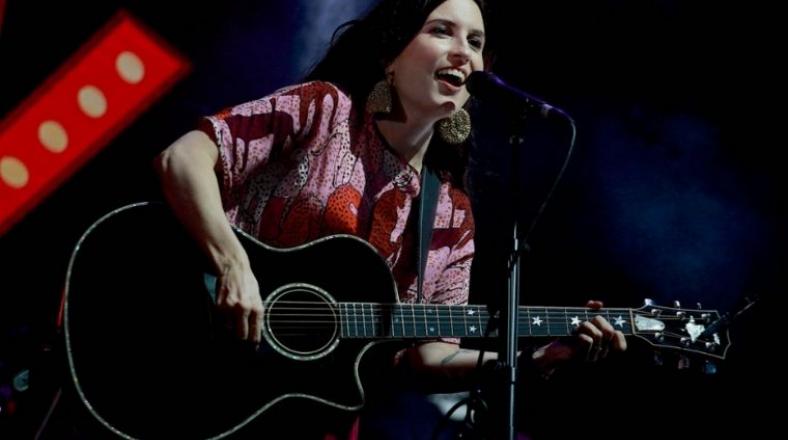
School of fish: how we involved Indigenous students in our investigation of a 65,000-year-old site
Morgan Disspain, Southern Cross University and Lynley Wallis, Griffith UniversityA recent program for school kids in Kakadu and West Arnhem Land, incorporating traditional knowledge and Western science, is a model for teaching Indigenous children on Country.
The Djenj Project (djenj means “fish” in the local language) involved teaching Bininj (Aboriginal) children and rangers about fish, and scientific water research techniques, to improve employment opportunities.
As archaeologists, we wanted to find out how fish populations near the 65,000-year-old Madjedbebe archaeological site have changed over thousands of years. Evidence collected from the rock shelter suggests it’s one of the oldest sites on the continent.
We wanted to know which fish Bininj inhabitants at the site ate in the past, where and how they caught them, what the environment was like then, and what impact humans and environmental change have had on fish populations.
We needed to gather information about traditional fishing methods and knowledge. We also needed to gather samples of the current fish in the region, to compare them with fish remains excavated from Madjedbebe.
Read more: When did Aboriginal people first arrive in Australia?
To do that meaningfully, we wanted to bring the community on the journey with us, rather than working in our labs in isolation. Dozens of school children between the ages of seven and 17 were involved in the project. They helped us answer our questions and learnt a lot in the process.
Beyond thinking about our scientific aims and questions, we put community-based benefits at the forefront of the research process. At the heart of the project were the core ideas of respect and two-way knowledge sharing, especially giving senior Bininj people the opportunity to share their knowledge and skills.
What It Looked Like
The project included about 80 community members from the small townships of Jabiru and Gunbalanya, and surrounding outstations in the Top End of the Northern Territory.
Bininj Elders shared traditional ecological knowledge with Bininj children, rangers (the Djurrubu Rangers of Gundjeihmi Aboriginal Corporation and Njanjma Rangers), and Western (Balanda) researchers. Everyone worked together to prepare teaching resources so the project has long-lasting benefits.
Fishing is a favourite activity for Bininj, so participation in the project was high. While word-of-mouth was the main way to reach the community about catching fish for the project, we also shared short videos on social media. These explained what we were doing and how people could get involved.
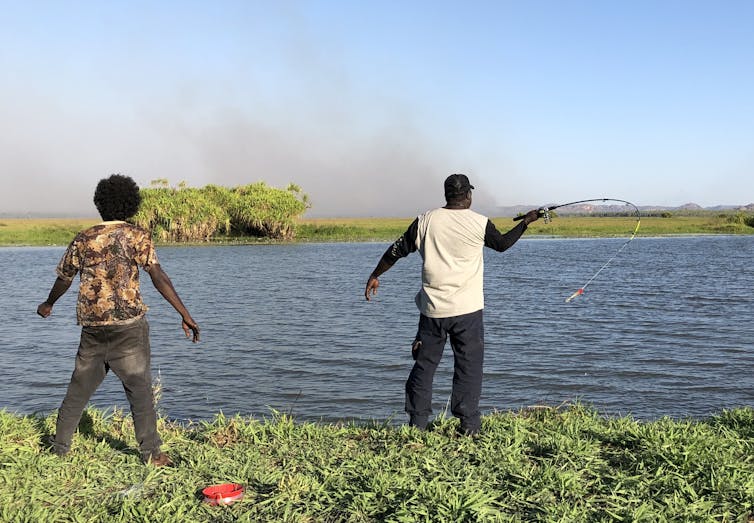
One positive side-effect of the project was providing large amounts of fish for the community to eat, promoting healthy eating.
In between the fishing and the eating was the science and the learning. A key aim was to integrate cultural knowledge into school lessons to improve literacy and numeracy skills.

Local teachers interwove The Djenj Project throughout the class curriculum for the entire year. Researchers ran monthly workshops to teach children and rangers how to collect and interpret scientific information from fish, such as species, length, girth and weight, as well as the capture location and the fishing method used.
Fish were then processed to collect otoliths (ear bones), and sometimes their entire skeletons. Otoliths provide valuable information about the fish’s life, such as its size, age, season of death, and the water conditions it lived in.
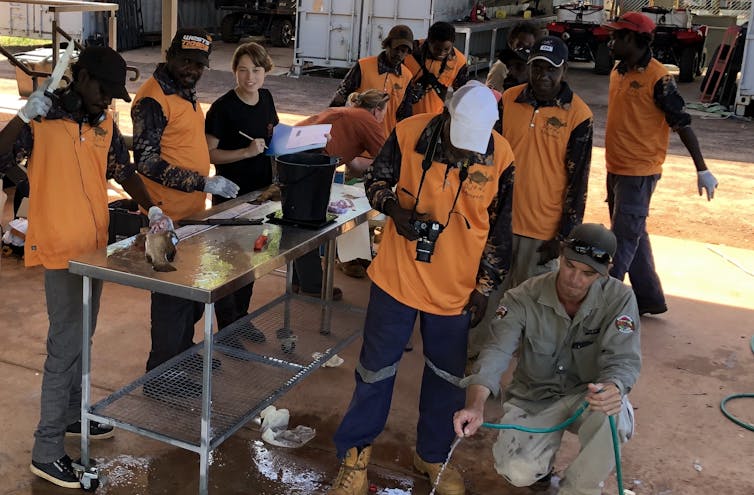
Elders shared traditional knowledge about fish and fishing methods with the children. They worked together to construct bone points to use as fish hooks. They also constructed traditional fish traps, which involved making string from plant fibre.
Groups made trips to the rock art (bim) sites, where Elders shared knowledge about djenj, and the children found, recorded and counted djenj images.
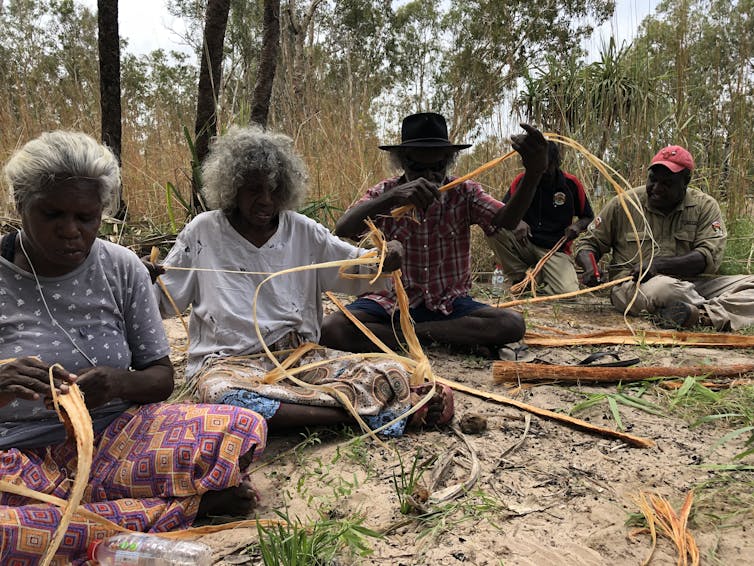
While the Elders shared their knowledge about the local waterways, water monitoring specialists provided training in testing water quality for rangers and children. Children also learnt about the importance of water quality to the health of all living things.
Woven throughout all activities was attention to Indigenous languages, with staff from the Bininj Kunwok Language Resource Centre creating a dedicated language booklet and app focused on djenj. This resource is helping with language maintenance and revitalisation in the Bininj community, as well as providing Balanda with the necessary terms to have productive discussions with Bininj about fish and water.

What We Learnt
Students and rangers gained a new appreciation for how much we can learn from our environment. The project also reinforced the rights of Bininj to engage in water and fish management processes.
The project also laid a foundation for future skills and environmental awareness with children (many of whom will go on to join local ranger teams). They have learnt cultural and scientific knowledge about fish, water, archaeology and rock art.
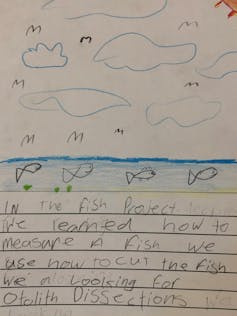
As researchers, we have established modern fish reference collections we can use and have learnt about local traditional fishing methods and ecological knowledge.
The Djenj Project is a great example of how grass-roots projects can provide practical benefits for Aboriginal communities, while contributing to scientific research. The model of collaborative teaching and learning from each other can be customised to benefit other communities.
We are planning to do more projects like this in West Arnhem Land over the following years, investigating other species of plants and animals.
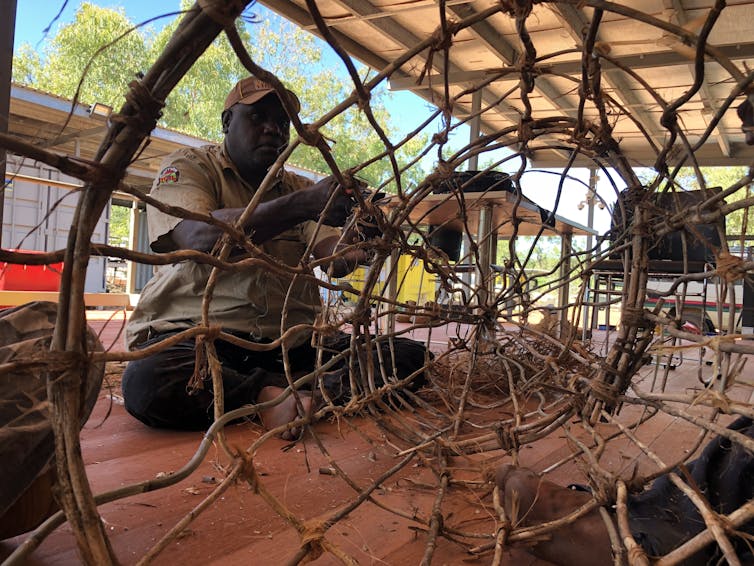
Morgan Disspain, Adjunct Researcher, Southern Cross University and Lynley Wallis, Associate Professor, Griffith University
This article is republished from The Conversation under a Creative Commons license. Read the original article.
Colourful opal fossils point to a diverse group of giant dinosaurs that shared Australia's terrain
Timothy Frauenfelder, University of New England and Nicolas Campione, University of New EnglandNorth-central New South Wales today is known for its arid, drought-prone climate. During the Cretaceous period, however, it was a lush coastal floodplain with a high diversity of vertebrates including dinosaurs, crocodiles, turtles and soaring pterosaurs.
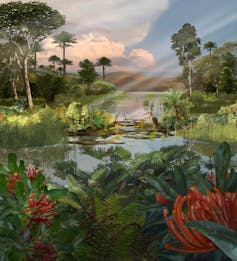
New insights gleaned from opalised teeth, found near the town of Lightning Ridge, are now helping paint a picture of the most enormous dinosaurs to ever roam the planet: sauropods.
Our work, published today in the journal Lethaia, reveals up to three different sauropod species once lived in the region, feeding at different heights within the forest canopy.
Scintillating And Sizeable Specimens
Opalised fossils are natural casts made entirely out of opal. While they generally don’t preserve the original organism, they do preserve its shape.
In Lightning Ridge, opalised fossils are a rich source of palaeontological information. For decades, miners have excavated these fossils — including the sauropod teeth we studied — from deep underground its opal fields.
The sauropods were a group of dinosaur species with markedly long necks, long tails and a herbivorous diet. Potentially weighing up to 90,000 kg, they were the largest animals to have ever walked the Earth.
Sauropods were an extremely important component of the known vertebrate fauna in northern Australia. Until recently, we knew of four named species from Queensland: Savannasaurus elliotorum, Diamtinasaurus matildae, Austrasaurus mckillopi and Wintonotitan wattsi.
However, whether this diversity was unique to Queensland, or extended into more southern regions, remained unknown.
Read more: Meet Savannasaurus, Australia's newest titanosaur
The Wisdom In Studying Teeth
For our study, we examined 25 sauropod tooth fossils aged between 95-100 million years old. From these, we identified five “morphotypes”, or tooth-shape categories. Several features of a tooth can define its morphotype, including its symmetry, the presence or absence of grooves and wear patterns.
Humans have multiple morphotypes within their mouths, such as molars for grinding, incisors for nipping and canines for grasping. But unlike humans, we know all the teeth of sauropod species would have served similar functions and would have thus had little variation.
This is good news for us, because it means we can be pretty confident sauropod tooth fossils with different shapes came from different species.
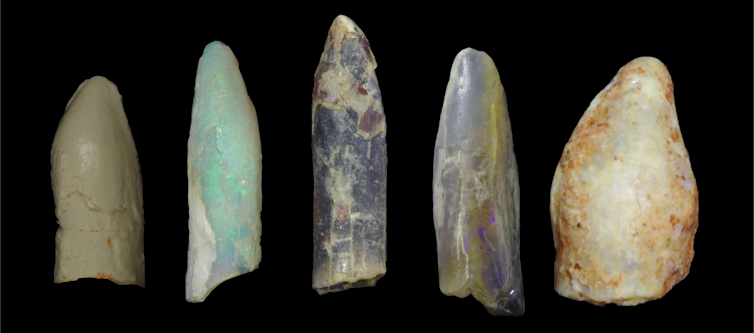
We interpreted three of the five morphotypes in our fossil collection as coming from the upper jaw and the other two from the lower jaw. By comparing our fossils with those from more completely studied sauropods, we were able to link them with at least three distinct species that would have cohabited the area around what is now Lightning Ridge.
While we couldn’t assign the 25 tooth fossils to specific species (as we’d need more than just teeth to identify a dinosaur species), we do know all the teeth belonged to a large group of sauropods known as Titanosauriformes.
This group included the late Jurassic Brachiosaurus, which famously reared-up on its hind legs in the 1993 movie Jurassic Park.
Also, one of the morphotypes likely came from a later subgroup of Titanosauriformes, called Titanosauria. This group contained species such as the truly gigantic dinosaurs Argentinosaurus and Patagotitan.
A Tooth Tells The Truth
Tooth fossils aren’t only useful to gauge past diversity, but also to infer diets of long-extinct animals. The dietary link is evident since teeth are the primary tool for obtaining and processing food.
When studying teeth, one way we can interpret diets is through looking for “microwear”. This refers to an assortment of small features found on teeth from tooth-to-food or tooth-to-tooth contact.
These features can be preserved in tooth fossils as scratches or pits visible on worn surfaces. Specifically, the ratio of scratches to pits can indicate the grittiness, or smoothness, of a dinosaur’s diet.
More pits means more grit (dust minerals) in the diet. This shows feeding took place closer to the ground. Conversely, more scratches indicates a diet of smoother food, such as foliage, found higher in the forest canopy.
While microwear patterns of North American sauropods have been extensively researched, this is the first time they’ve been observed in sauropods from Australia.
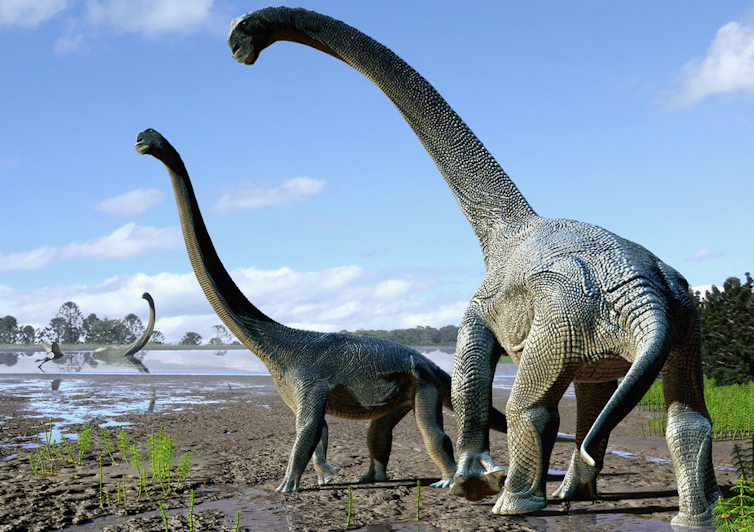
Zooming In On Pits And Scratches
From our collection, two tooth fossils had preserved microwear features. The others were either not worn or had their microwear features obliterated during the opalisation process.
Interestingly, the fossils that did preserve microwear also had different morphotypes. This suggests at least two of the three sauropod species that once roamed NSW were able to coexist by consuming different food within the forest canopy.
One species had a higher proportion of scratches than pits, so it likely fed on soft vegetation between 1-10m above the ground. The other had a higher proportion of pits, which suggests it ate harder vegetation less than 1m above the ground.
Our research may have been limited to teeth, but it demonstrates even incomplete fossils can provide key insights into the lives of long-extinct creatures.
Importantly, it discloses the fascinating sauropod diversity that once inhabited New South Wales, previously identified only in Queensland.
Much like animals today, we believe their coexistence would have depended on them eating different foods in the same area. This would have led to a colourful, cosmopolitan dinosaur landscape in a past, much different, Australia.
Read more: Has dinosaur DNA been found? An expert explains what we really know
Acknowledgements: we’d like to thank the Australian Opal Centre and the Australian Museum for supplying the fossils for our research.![]()
Timothy Frauenfelder, PhD Candidate in Palaeontology, University of New England and Nicolas Campione, Research Fellow/Lecturer, University of New England
This article is republished from The Conversation under a Creative Commons license. Read the original article.
What Day of the Dead tells us about the Aztec philosophy of happiness
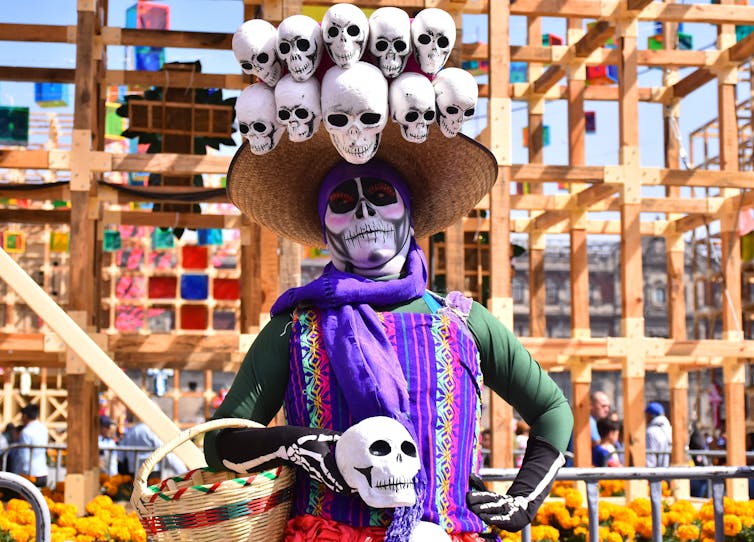
Growing up in the United States, I remember on Halloween my mother used to say, “Honey, this is not just a day for costumes and candy. You must also remember your relatives. Know their names.” She would show me pictures of great-aunts, uncles and other deceased relatives.
Meanwhile, my family members in Mexico observed Day of the Dead, a national holiday that is celebrated from Oct. 31 to Nov. 2. They would build small altars at home to honor their loved ones, and put food, drinks, photos and other personal items on them. They similarly decorated their ancestors’ graves.
These days, I am part of a small group of researchers who are working to recover Aztec philosophy. My focus is on Aztec ethics, which the Aztecs thought of as the art of living well, but we call the pursuit of happiness.
I’ve learned that Day of the Dead rituals, which date back to Mexico’s pre-Columbian peoples and are observed all over the Americas, are deeply rooted in Aztec ethics.
A Brief Introduction To Aztec Philosophy
Shortly after Christopher Columbus arrived in the Caribbean in 1492, Spanish people colonized the region. In 1521 the Aztec empire fell in a two-year war led by the Spaniard Hernán Cortés.
Afterwards, Spanish priests wanted to understand the native population in order to convert them to Christianity. They painstakingly detailed the Aztecs’ beliefs in volumes of material written in Nahuatl, the Aztec language. The most important of these sources is the “Florentine Codex,” written between 1547 and 1577.
The basic problem of life for the Aztecs, according to these sources, is that humans aren’t perfect – they make mistakes. “The earth is slippery, slick,” the Aztecs would say. And to avoid falling into error, people need to live a balanced life on three different levels: in their psyches, their bodies and their society.
The top individual goal in Aztec ethics, then, is for people to balance their psyche. It is done by aligning the heart, or yollotl, and face, or ixtli. By “heart,” the Aztecs meant thoughts and desires. By “face,” they meant the rational organization of those desires.
Where Day Of The Dead Fits In
For the Aztecs, then, a happy life is achieved through balance. Individually, this means balancing one’s “face” and “heart,” but socially this involves friends, family and ancestors. Day of the Dead rituals help with this social balance.
It’s important to note that the “heart” is a metaphor for all of the body’s desires. Also, the Aztecs did not distinguish minds from bodies. They believed each region of the body had its own “mind.” For example, our eyes think one way, our ears another, and our skin another way still. As the scholar Alfredo Lopéz Austin argues, the Aztecs thought of consciousness as the result of this ecosystem of minds, with each mind competing for attention and expressing its own desires.
Within this ecosystem of minds, the Aztecs believed that three regions held the highest concentration of the cosmic forces that make humans living, moving beings: the heart (the physical heart, in this case), the head and the liver.
The heart houses the “yolia,” which expresses one’s conscious and remembered personality. The head houses the “tonalli,” which expresses the strength of one’s character and destiny. And the liver houses the “ihiyotl,” which is responsible for our breathing and health.
When we die, the Aztecs believed these three powers separate from our bodies. The ihiyotl, or breath, immediately rejoins nature. The tonalli, or vital strength, returns as energy to be called on in need. One’s yolia. or personality, however, travels to the land of the dead, called Mictlán. There, it endures a series of trials, including hunger and cold winds.
To help in the journey, each person’s yolia is accompanied by a little yellow dog and whatever offerings one’s loved ones make. That’s why on various days of the year – not only during Day of the Dead – family members are supposed to help the yolia of recently deceased relatives by offering them food, drink and other gifts at their home shrines.
[Deep knowledge, daily. Sign up for The Conversation’s newsletter.]
But after four years, the yolia finishes its journey and rejoins the fundamental energy of the universe – “ometeotl,” or god. All that remains of the deceased, then, is their force of personality as tonalli, which, the Aztecs believed, could be called on by remembering their name.
By remembering our ancestors, Aztecs thought, we help balance our lives while we’re here on Earth and also support our loves ones in their afterlife. This, in essence, is the purpose of the Day of the Dead that many observe today.![]()
Lynn Sebastian Purcell, Associate Professor of Philosophy, State University of New York College at Cortland
This article is republished from The Conversation under a Creative Commons license. Read the original article.
A Bark With Bite: Australia Needs An ICAC-Styled National Independent Watchdog
“This sort of budgetary fiddle is a fiddle with our democracy” — Dr Rolfe
UNSW Solar Pioneer Named Physical Scientist Of The Year
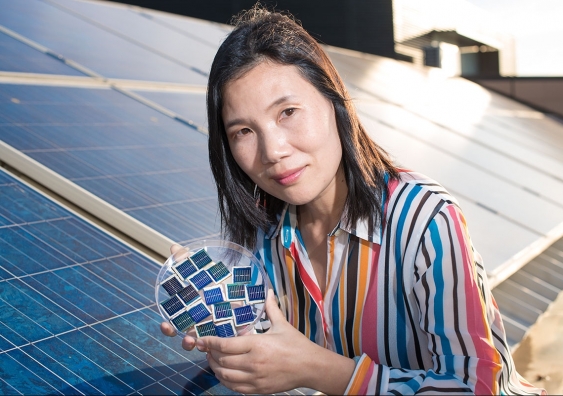
Appointments To The High Court Of Australia
Prime Minister's Prizes Celebrate The Best Of Australian Science
- The $250,000 Prime Minister’s Prize for Innovation was presented to Professor Thomas Maschmeyer from the University of Sydney, for his dual work in developing commercially viable processes to recycle mixed plastics and developing a new low‑cost battery technology to store renewable energy.
- The $50,000 Prime Minister’s Prize for Excellence in Science Teaching in Secondary Schools was presented to Willetton Senior High School (WA) teacher Darren Hamley, for his work establishing extracurricular programs to help students relate their scientific learnings to real-world applications.
- The $50,000 Prime Minister’s Prize for Excellence in Science Teaching in Primary Schools was presented to Bonython Primary School (ACT) STEM Specialist Teacher Sarah Fletcher, for her outstanding contribution to not only the school’s STEM program but also the wider education community.
- The $50,000 Frank Fenner Prize for Life Scientist of the Year was presented to Peter MacCallum Cancer Centre clinician-scientist Professor Mark Dawson for world-leading research in the field of epigenetics, including the development of new treatment strategies and therapies for blood cancers.
- The $50,000 Malcolm McIntosh Prize for Physical Scientist of the Year was presented to UNSW Scientia Associate Professor Xiaojing Hao, who has emerged as a world-renowned leader in thin-film solar photovoltaics. Associate Professor Hao’s work developing more environmentally friendly and efficient solar cells has set global records for energy conversion efficiency.
- The $50,000 Prize for New Innovators was presented to Flinders University Associate Professor Justin Chalker for his invention of a new class of polymers that turn waste plastics into global sustainability solutions. These include a range of materials that can remove mercury from polluted soil and water, help absorb oil from ocean spills, and provide more effective slow-release fertilisers.
Divide And Conquer :A New Formula To Minimize 'Mathemaphobia'
Disclaimer: These articles are not intended to provide medical advice, diagnosis or treatment. Views expressed here do not necessarily reflect those of Pittwater Online News or its staff.